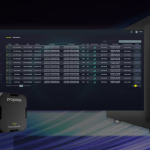
How can AIOps Revolutionize Future IT Operations?
May 6, 2024
What Is a Mobile Proxy Server?
May 14, 2024On this page
- What Makes Data Visibility Vital for Businesses?
- What Is the Difference between Data Visibility and Data Observability?
- How Does Data Observability Enhance System Monitoring?
- What Is the Role of Data Centers in Data Visibility?
- How Do Security, Observability, Visibility, and Monitoring Complement Each Other?
- Conclusion
In today’s digital landscape, businesses generate and rely on vast amounts of data daily. If correctly managed, this data, scattered across diverse sources, becomes a treasure trove of actionable insights. This article looks into two critical facets of data management: data visibility and data observability.
What Makes Data Visibility Vital for Businesses?
Data visibility refers to accessing and viewing data in real-time. This capability is indispensable for businesses. It allows real-time decision-making, seamless tracking of operations, early identification of security risks, and optimization of data performance. As a result, the data generated transforms into an actionable asset, bolstering informed decisions and enhancing operational efficiency.
However, data visibility isn’t without its challenges. Businesses face difficulty managing large volumes of data, especially when this data is scattered across multiple locations. When handling sensitive personal data, the importance of data protection becomes vital, necessitating rigorous security measures.
Improving data visibility involves a multi-pronged approach. Businesses can leverage robust data management systems and enact clear data access policies to organize and store data securely. They can further streamline data management using tools for data visualization, data analytics, and data classification. The ultimate goal is end-to-end data visibility, which provides a comprehensive data map, fostering transparency, enabling regulatory compliance, and facilitating smoother digital transitions. Regularly mistaken for being the same, let’s look at the differences and connections between data visibility and observability.

What Is the Difference between Data Visibility and Data Observability?
Although often used interchangeably, data visibility and data observability are fundamentally different, although interconnected, concepts. Understanding their unique characteristics and how they complement each other is vital for businesses seeking to boost their data management capabilities.
Data visibility focuses on accessing and viewing specific system metrics in real time. It essentially pertains to the level of transparency an organization has in its data, considering both quantity and quality. This visibility is critical for troubleshooting, where the ability to access and analyze data quickly can speed up issue resolution.
On the other hand, data observability goes beyond viewing specific metrics to analyze the entire network system. It gives businesses a holistic view of their data landscape, delivering deeper insights based on raw, contextual data. Observability is proactive, enabling businesses to foresee potential challenges before they escalate, potentially improving network performance and security.
The Marriott International and British Airways data breaches highlight the importance of data observability. Observability grants a deeper understanding of system behavior, permitting prompt detection of unusual activities. This could entail identifying a sudden spike in network traffic or irregular access requests indicative of a potential breach.
Data observability is essential for making robust system access decisions. Businesses can establish more secure and efficient access protocols by offering a broader view of the network environment. These decisions about data access can be critical in preventing potentially significant financial and reputational damage from data breaches.
It’s important to remember that while data visibility and data observability serve different purposes, both are critical components of a comprehensive data management strategy. Data visibility enables effective business operations, while data observability provides the insights needed to anticipate and mitigate potential risks.

How Does Data Observability Enhance System Monitoring?
Data observability is a concept separate from DevOps, another tech term that refers to a set of practices combining software development and IT operations. Observability focuses on monitoring and analyzing the performance of systems post-deployment. It offers real-time visibility into system performance and health, leading to early detection of potential issues, root cause identification, and assistance in capacity planning and forecasting. Tools such as AppDynamics, Datadog, and Grafana can significantly enhance an organization’s data operations.
However, data observability also presents challenges, including potential information overload, false alarms, high implementation costs, and privacy concerns. Therefore, while it can offer valuable insights and help prevent downtime, it’s vital to balance these benefits with potential drawbacks and implement proper controls to ensure data security and privacy.

What Is the Role of Data Centers in Data Visibility?
The ever-increasing significance of data visibility in today’s business landscape necessitates implementing robust data management systems. Data centers, the powerhouse behind an organization’s IT operations and equipment, form the backbone of these systems.
Data centers are responsible for storing, managing, and distributing the vast volumes of data that organizations generate. They handle a myriad of information types—from transactional to operational data—processing and transmitting it through their advanced systems. Through these centers, businesses can ensure optimal data visibility, a strategic necessity in the present digital age.
Data centers deploy sophisticated data management and storage systems to handle data in real time. This functionality allows businesses to monitor crucial operational metrics, identify potential areas for improvement, and make data-driven decisions. Furthermore, data centers play an instrumental role in identifying and mitigating potential security threats, by providing real-time access to data.
However, given the sheer volume of data processed and stored, maintaining data visibility within these centers can be challenging. Robust security measures and strong data governance practices become essential to safeguard against unauthorized access and potential data breaches. However, hiring a professional data center to help manage your data can aid in this management.
Outsourcing data center operations to third-party providers, such as colocation facilities, is becoming an increasingly popular solution. This approach can offer numerous benefits, from reducing the financial burden associated with maintaining an in-house data center to providing access to cutting-edge technology that enhances data visibility and ensures efficient data management. Specifically, the Los Angeles colocation data center, Colocation America, offers robust infrastructure, dedicated bandwidth, and advanced security features, optimizing the benefits of colocation for data visibility.
As digital evolution accelerates, the role of data centers in ensuring data visibility becomes even more critical. As such, it’s imperative for organizations to either invest in advanced data center technologies or opt for outsourcing solutions like colocation, to promote efficient and secure data management while enhancing data visibility.

How Do Security, Observability, Visibility, and Monitoring Complement Each Other?
Understanding the differences between security, observability, visibility, and monitoring is crucial in today’s complex IT environments. While these terms are related, they each play a unique role in strengthening your security.
Security monitoring uses tools that notify IT staff when certain levels are reached, acting like an alarm system. However, monitoring can become a heavy task as data volumes rise, causing alert fatigue. This is where observability steps in. Observability smartens up the process by using technologies like artificial intelligence. It helps make sense of the numerous alerts, allowing for quicker problem-solving.
Visibility is about the extent of detail that the monitoring tools and observability systems can provide. It’s like a telescope, enabling you to see further and deeper into your security setup and making more informed decisions.
Data observability, visibility, and monitoring are distinct yet complementary pieces of an effective security framework. Together, they help detect threats, reduce risks, and respond quickly to security incidents, reinforcing your overall IT security strategy.
Conclusion
Data visibility and data observability are crucial facets of data management in the digital era. They arm businesses with the tools to navigate the vast sea of data, harnessing it for operational efficiency and informed decision-making. A balanced approach, leveraging the strengths of both concepts, can help organizations maximize their business value while mitigating risks.


1 Comment
This article provides a comprehensive overview of the importance of data visibility and data observability in modern business operations. The distinction between the two concepts is clearly articulated, highlighting how visibility focuses on real-time access to specific metrics, while observability offers a broader, more proactive view of the entire system. The discussion on the role of data centers is particularly relevant, emphasizing their critical function in managing and securing vast amounts of data. The complementary relationship between security, observability, visibility, and monitoring is also well-explained, underscoring the necessity of integrating these elements for a robust data management strategy. Overall, the article serves as an insightful guide for businesses looking to enhance their data management practices and optimize decision-making processes.